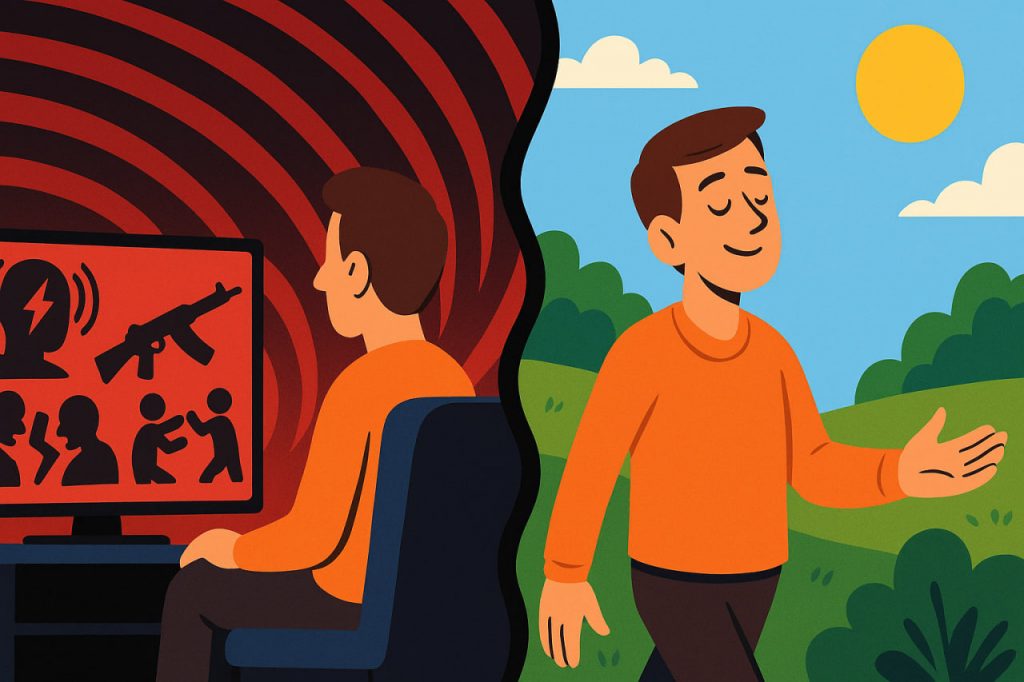Television remains one of the most powerful media sources in the world, shaping how people perceive reality. However, much of its content — from news to entertainment — tends to focus on conflict, crime, disaster, and drama. While such stories attract attention, constant exposure to negativity can deeply influence mental health, worldviews, and behavior. Understanding why this happens and what it does to the human mind helps us make more mindful viewing choices.
Why TV Content Is Often Negative
Television networks compete for viewers’ attention, which translates directly into advertising revenue. Studies in psychology show that humans have a negativity bias — we naturally pay more attention to threats, danger, or bad news than to neutral or positive information. Media companies exploit this tendency because dramatic or shocking stories increase viewer engagement and ratings. As a result, news programs highlight crimes, conflicts, and disasters far more often than positive events or scientific progress.
The Role of Entertainment Media
Even fictional programs — dramas, reality shows, or thrillers — often rely on conflict, scandal, and tragedy to maintain emotional intensity. Comedies and uplifting content exist but usually occupy less airtime because they generate weaker immediate emotional responses. Thus, both news and entertainment reinforce a distorted image of reality — one where danger, chaos, and hostility appear to dominate human life.
Psychological Effects on Viewers
Continuous exposure to negative television content can lead to chronic stress and a sense of helplessness. Watching violent or depressing material activates the body’s stress response system, raising cortisol levels. Over time, this may contribute to anxiety, sleep problems, and even physical health issues. People who regularly consume negative news often perceive the world as more dangerous than it really is — a phenomenon known as “mean world syndrome.”
Impact on Children and Families
Children are particularly vulnerable to the emotional impact of television. Exposure to fear-inducing or violent imagery can affect their emotional development and sense of safety. For families, negative TV content can increase irritability and reduce quality interaction time, as shared attention shifts toward screens instead of meaningful conversation.
Social Consequences
When a society’s media landscape is dominated by negativity, it fosters pessimism and polarization. Constant exposure to divisive or frightening topics can make people less trusting and more hostile toward others. It may also discourage civic engagement — viewers begin to feel that their actions cannot make a difference in solving global problems.
How to Protect Yourself
- Limit viewing time and avoid watching stressful content before bed.
- Choose balanced sources — include educational and scientific programs that focus on solutions, not just problems.
- Practice critical thinking — remember that television shows a selective version of reality.
- Spend more time offline — engage with nature, hobbies, and personal connections to counteract emotional fatigue.
Conclusion
Television’s focus on negativity is not an accident but a result of human psychology and media economics. While staying informed is important, constant exposure to dark or dramatic stories can distort perception and harm mental health. By consciously choosing what we watch, we can protect our minds, reduce stress, and restore a more balanced view of the world.
Interesting Facts
- According to Stanford University research, about 70% of television news and entertainment programs contain elements of violence, fear, or conflict. Such content activates the amygdala, the brain region responsible for anxiety, even when viewers consciously know they are watching fiction.
- Regular exposure to negative media can increase cortisol levels (the stress hormone) by up to 40% above normal, leading to poor sleep, irritability, and a reduced capacity for empathy.
- Psychologists note that after just 30 minutes of watching “crisis-centered” news, viewers show a measurable decline in cognitive performance and focus.
- Interestingly, positive programming—such as nature documentaries, educational shows, and uplifting films—stimulates opposite brain regions, increasing dopamine and serotonin levels, which enhance mood, creativity, and motivation.
Glossary
- Negativity bias – the tendency to focus more on negative information than positive.
- Cortisol – a hormone released in response to stress.
- Mean world syndrome – a belief that the world is more dangerous than it really is, due to media influence.
- Polarization – division of society into opposing groups with extreme views.


